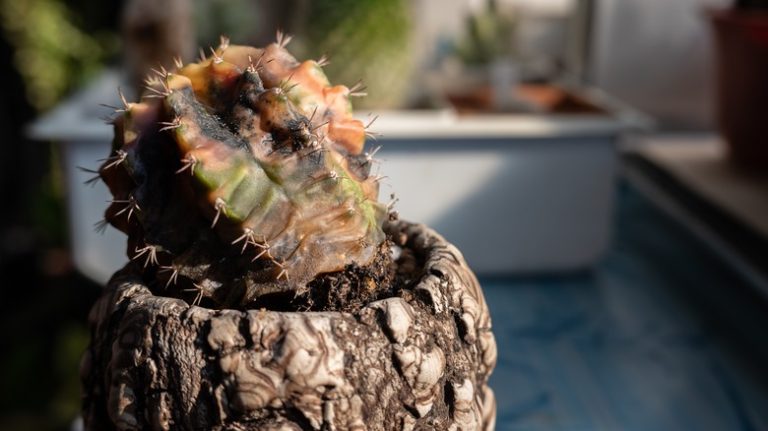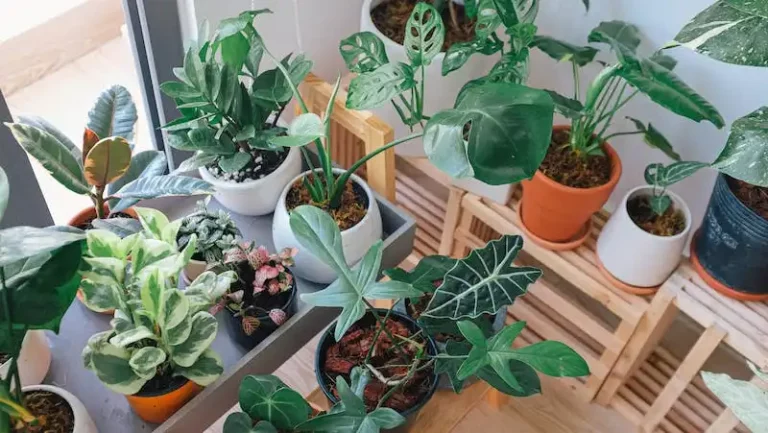Forsythia is a popular flowering bush that is known for its bright yellow flowers. These plants are native to Asia and can be found in many gardens around the world. They are loved by gardeners for their early spring bloom and their ability to thrive in a variety of growing conditions.
One of the key steps in growing and caring for forsythias is pruning. Pruning should be done after the bushes have finished blooming in the spring. This helps to maintain a compact and mounded growth habit. Pruning also encourages the plants to produce more flowers in the following season.
Forsythias are hardy plants that can tolerate a wide range of temperatures and humidity levels. They prefer full sunlight and well-draining soil. While they are adaptable, forsythias grow best in slightly acidic soil. It is also important to water them regularly, especially during dry periods.
When planting forsythias, it is best to choose a variety that is suited to your climate. Some varieties, like Forsythia europaea, are less cold hardy and may not survive in colder regions. Young forsythias can be planted in the ground or in pots. If planting in pots, it is important to use a well-draining potting mix and to repot the plants every third year or so.
Overall, forsythias are relatively low-maintenance plants that can bring a splash of color to any garden. Whether planted singly or in groups, they are sure to brighten up your landscape. With the right care and growing conditions, these beautiful yellow flowers will continue to delight gardeners for years to come.
Forsythia Plant Care: Growing Guide
The Forsythia plant is native to Wisconsin and is known for its stunning yellow flowers. Even in colder temperatures, this hardy plant can thrive. It is a plant that can be taken care of in a variety of conditions. The foliage of the Forsythia plant is yellow and it never disappoints, especially in early spring when it bursts into bright yellow flowers.
If you want to grow a Forsythia plant, there are a few key things to keep in mind. First, the plant prefers well-draining soil and should be planted in a sunny location. It can tolerate a variety of soil conditions, but prefers slightly acidic soil. The Forsythia ovata attracts butterflies and birds to your garden, making it a popular choice for many gardeners.
When it comes to caring for your Forsythia plant, it is fairly low-maintenance. You should water the plant regularly, especially during hot and dry weather. It is also important to keep an eye out for any signs of diseases or pests. If you notice any issues, take immediate action to prevent any further damage to the plant.
Pruning the Forsythia plant is also important, especially after the flowers fade. You can prune the branches to maintain the desired shape and size of the plant. Just be sure to prune it back right as soon as the flowers have finished blooming because the plant blooms on old wood.
If you want to propagate your Forsythia plant, you can do so by taking cuttings. Cut a 6-inch long branch from the plant and remove the lower leaves. Place the cutting in a pot filled with potting soil and keep it moist. The cutting should root within a few weeks, and you can then transplant it into a larger pot or directly into the ground.
For overwintering, you can protect your Forsythia plant by covering it with a plastic sheet or burlap. This will help protect it from harsh winter weather and prevent frost damage. Just be sure to remove the covering in the spring to allow the plant to start growing again.
In conclusion, the Forsythia plant is a beautiful and hardy shrub that can brighten up any garden. With proper care and attention, it will reward you with vibrant yellow flowers every spring. Whether used as a backdrop or as a low-growing mounded bush, the Forsythia plant is a stunning addition to any landscape. If you have any questions about growing or caring for your Forsythia plant, don’t hesitate to reach out to the experts or join a gardening community to get the latest information and tips.
Forsythia Care
Yellow forsythia flowers are a beautiful sight in the spring. They’re known for their vibrant yellow color and open in clusters. Although there are some blue flowering forsythia varieties, they’re less common compared to the yellow types.
Forsythias are hardy plants that thrive in a wide range of conditions. They have a bush-like habit and can take the form of a low-growing shrub or a taller variety. Regardless of their size, they should be planted in a sunny location to ensure their health and vibrant flowering.
When it comes to caring for forsythias, there are a few important factors to consider. First, they prefer well-draining soil and should be watered regularly, especially during dry periods. Adequate water supply is crucial for their overall health and flower production.
Regarding fertilization, forsythias generally do well with a balanced fertilizer applied in spring. This will provide the necessary nutrients to support their growth and flower production. Some gardeners also feed their forsythias with a slow-release fertilizer in early spring for optimal results.
In terms of pruning, forsythias can be pruned after they finish flowering. This can help maintain a desired shape and prevent them from getting too leggy. It’s also a good time to remove any dead or damaged branches. Pruning can be done either by cutting back the entire bush or selectively removing specific branches.
Forsythias can be propagated through division or cuttings. Division involves separating the roots of an established plant to create new plants. Cuttings can be taken from a healthy forsythia bush and placed in a potting material to root. Both methods have their advantages, so it’s a matter of personal preference.
In colder climates, overwintering forsythias can be a concern. Some varieties are hardy enough to withstand winter temperatures, while others may need extra protection. Applying a layer of mulch around the base of the plant and covering it with burlap or a similar material can help insulate the roots and prevent winter damage.
Overall, forsythias are relatively low-maintenance plants that reward gardeners with beautiful yellow flowers. Proper care, including adequate sunlight, watering, fertilization, and pruning, can ensure their health and longevity in the garden.
Planting
When planting yellow forsythia flowers, it is important to choose a suitable location within your garden or yard. Forsythias can be planted directly into the ground or in a potting container. If planting in the ground, find a spot somewhere that receives full sunlight and has well-draining soil. Forsythias also like humidity, so if you live in an area with dry weather, consider improving the soil with organic matter or placing mulch around the base of the plant to help retain moisture.
If you choose to plant the forsythia in a pot, make sure to use a well-draining soil mix. Potting the plant will allow you to move it around to find the best blooming position or to bring it indoors during colder weather. Forsythias are hardy plants and can survive in a variety of weather conditions, but they do best in USDA hardiness zones 5 to 8. If you live in a colder region, you may need to take extra precautions for the plant’s health during the winter months.
When planting the forsythias, make sure to space them at least 4 to 6 feet apart. These bushes can grow up to 10 feet tall and wide, so giving them enough room to spread out will prevent overcrowding. If you’re planting younger bushes, you can place them closer together as they grow much less during their first few years.
As for fertilizing, forsythias do not require a lot of fertilizer. Applying a balanced fertilizer in the spring and another one in the fall should be sufficient. Be careful not to over-fertilize, as this can lead to excessive foliage growth at the expense of blooming.
If you’re looking to propagate your forsythias, you can do so through cuttings taken during the late spring or early summer months. Make sure to remove any flowers or flower buds from the cutting and place it in a well-draining soil mix. Keep the soil moist until the cutting develops roots and begins to show signs of new growth.
Pruning is another important aspect of forsythia care. It is best to prune the plants after they finish blooming. This will help maintain their shape and promote healthy growth. Remove any dead or damaged branches, as well as any branches that are growing inwards or crossing over each other. By doing this, you’ll be able to keep your forsythia bushes looking neat and well-maintained.
Planting yellow forsythia flowers can be a beautiful addition to any garden or landscape. Their vibrant blooms and low-growing habit make them perfect for lining walkways or as a backdrop for other flowering plants. Whether you’re a seasoned gardener or just starting out, forsythias are relatively easy to grow and provide a burst of color in early spring.
For more information on planting forsythias or gardening tips in general, consult the latest horticulture resources available. Enjoy the beauty of these bright yellow flowers and the butterflies they attract!
Light
Forsythia plants thrive in full sun to partial shade. They prefer well-drained soils but can tolerate a wide range of soil types. Forsythia cultivars are typically hardy in USDA plant hardiness zones 5 to 8.
These plants are early bloomers, typically opening their yellow flowers in early spring before the leaves appear. They require a period of winter chill to set flower buds. This overwintering process allows forsythia to withstand cold temperatures and bloom reliably each year.
When selecting a location to plant forsythia, consider the amount of sunlight the area receives. The more sunlight the plants receive, the better the blooming will be. Forsythia can tolerate a variety of soil conditions, but it thrives in well-drained, slightly acidic soil. If your soil is heavy or clay-like, you can improve drainage by adding organic matter, such as compost, to the planting hole.
Forsythia plants are commonly used as hedges or shrubs in landscaping. They have a mounded growth habit and can reach a height of 6 to 10 feet. Some newer cultivars, like ‘Show Off Starlet’ and ‘Show Off Sugar Baby’, are more compact and grow to a height of just 2 to 3 feet, making them suitable for smaller gardens or containers.
If you are planting forsythia in a container, choose a large pot with drainage holes. Use a well-draining potting mix and place the container in an area that receives full sun or partial shade.
Once established, forsythia plants require minimal care. They are tolerant of drought and humidity but perform best with regular watering, especially during dry periods. Pruning forsythia is typically done after flowering, removing any dead or damaged branches. This helps to maintain the shape of the plant and encourages new growth.
Forsythia flowers are a valuable source of nectar for bees, butterflies, and other pollinators. Their bright yellow blooms are a welcome sight in the early spring, signaling the arrival of warmer weather and the start of the gardening season.
In summary, forsythia plants prefer full sun to partial shade and well-drained, slightly acidic soil. They are hardy in zones 5 to 8 and bloom early in the spring before the leaves appear. With proper care and maintenance, forsythia plants can be a beautiful addition to any garden or landscape.



